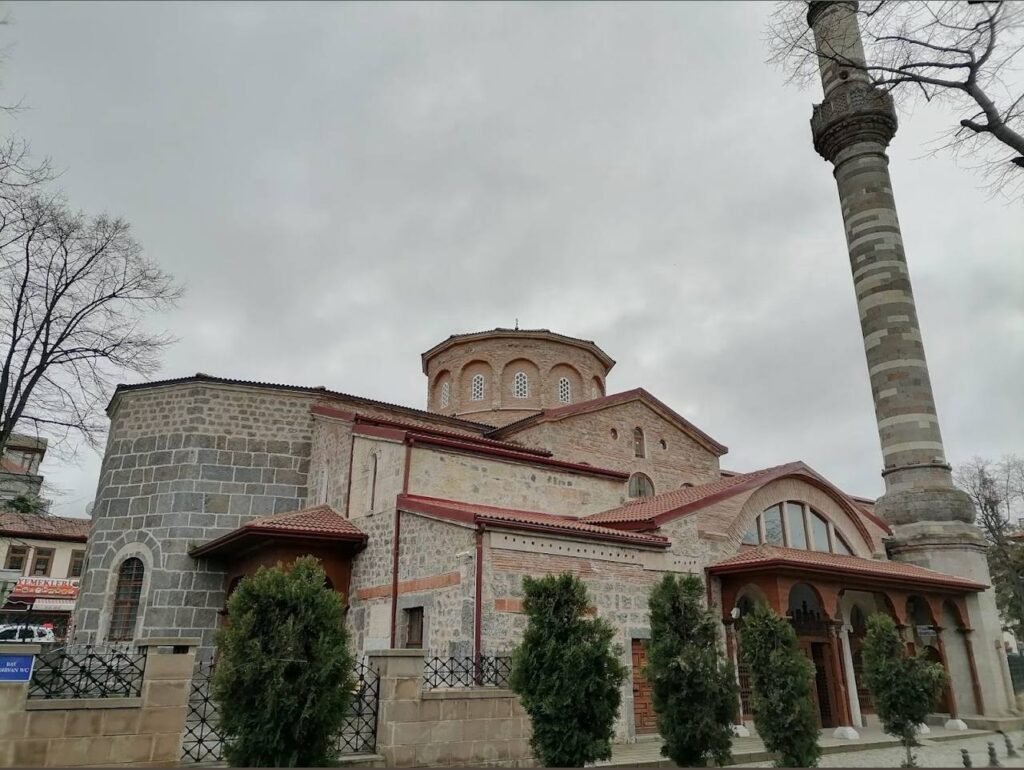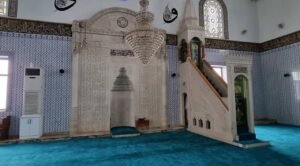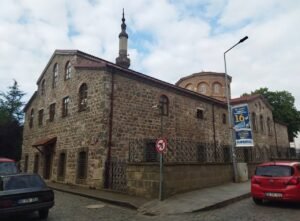Description
Discovering the Fatih Mosque in Trabzon, Turkey: A Journey Through Time
Nestled in the heart of Trabzon, a city on the northeastern coast of Turkey along the Black Sea, the Fatih Mosque stands as a timeless testament to the region’s rich and layered history. Also known as the Panagia Chrysokephalos Church in its earlier incarnation, this magnificent structure blends Byzantine and Ottoman architectural heritage, making it a must-visit for history enthusiasts, architecture lovers, and spiritual seekers alike.
From Byzantine Basilica to Ottoman Mosque
The story of Fatih Mosque begins long before the Ottoman Empire set foot in Trabzon. Originally constructed in the 10th or 11th century during the Byzantine era, it served as a Greek Orthodox cathedral known as the Panagia Chrysokephalos—"Our Lady of the Golden Head." It was the most important church of the Empire of Trebizond, which ruled the region from 1204 to 1461 following the fragmentation of the Byzantine Empire during the Fourth Crusade.
This church was not just a religious center but also a political symbol. It witnessed coronations of emperors and was a focal point for the Christian community of the city. Its architecture reflected the classic cross-in-square Byzantine plan, featuring a large central dome, columns, and richly decorated frescoes and mosaics.
In 1461, Sultan Mehmed II, known as Mehmed the Conqueror (Fatih Sultan Mehmet), brought the city of Trabzon under Ottoman control. In keeping with the traditions of the time, the grand church was converted into a mosque and renamed Fatih Mosque, in honor of the Sultan. This transition marked not only a change in religious affiliation but also a fusion of cultures that is still evident in the structure today.
Architectural Features: A Blend of Two Worlds
The architecture of Fatih Mosque is a captivating mixture of Byzantine and Ottoman influences. From the outside, the building retains much of its Byzantine character, including the cruciform shape and the large central dome, which rises gracefully above the prayer hall.
Upon entering the mosque, visitors are immediately struck by the soaring arches, tall columns, and intricate stone carvings that have survived the centuries. While many of the original Christian mosaics and frescoes have been lost or covered over time, some remnants remain visible, offering a hauntingly beautiful contrast to the more minimalist Ottoman aesthetic introduced during the conversion.
The mihrab (niche indicating the direction of Mecca) and minbar (pulpit) are later Ottoman additions, carved in elegant stone and wood. The interior is bathed in soft light that filters through arched windows, creating an atmosphere of serene spirituality. The calligraphy inside, added during the Ottoman period, includes verses from the Quran and names of Allah and Prophet Muhammad, offering another layer of meaning to the structure’s visual tapestry.
Location and Surroundings
Fatih Mosque is situated in the Ortahisar district, the historical core of Trabzon. This area itself is a living museum, filled with narrow cobblestone streets, old wooden houses, and other historical sites like Trabzon Castle, Atatürk Pavilion, and the Boztepe Hill viewpoint.
The mosque lies within walking distance of the Trabzon Museum and several traditional Turkish cafes where visitors can rest and enjoy local Black Sea delicacies such as kuymak (melted cheese and cornmeal) and hamsi (anchovies). The bustling bazaar district nearby is also perfect for picking up souvenirs, handmade crafts, and spices.
Cultural and Spiritual Significance
Fatih Mosque continues to serve as an active house of worship, drawing both local residents and travelers. Visitors are welcome to explore the mosque outside of prayer times, provided they dress modestly and respect the sanctity of the space. Headscarves are available for women at the entrance, and there's usually someone on hand to explain the mosque’s rules and history.
This mosque is more than just a historical site; it's a living monument. It bears witness to over a millennium of spiritual devotion, empire-building, and cultural transformation. Each stone and arch tells a story—not just of conquest and conversion, but of continuity and coexistence.
Visiting Tips
-
Opening Hours: Open daily, but non-Muslim visitors should avoid visiting during the five daily prayer times, especially Friday noon prayers.
-
Admission: Free of charge.
-
Photography: Allowed, but please avoid photographing worshippers.
-
Dress Code: Modest clothing is required. Long pants or skirts and covered shoulders are expected. Women should wear a headscarf, available at the entrance.
-
Guided Tours: Some local tour operators offer detailed walking tours of Ortahisar, including a stop at Fatih Mosque.
Why You Should Visit
For anyone visiting Trabzon, a stop at Fatih Mosque is not just a glance at a beautiful old building. It's a walk through history, a chance to experience the confluence of Christian and Islamic heritage, and an opportunity to appreciate the resilience and transformation of architecture over time. It exemplifies Trabzon's unique position at the crossroads of civilizations, having absorbed Greek, Roman, Byzantine, and Ottoman influences over centuries.
In a world often marked by divisions, places like Fatih Mosque stand as symbols of cultural integration. They remind us that beauty and meaning can emerge from diversity—and that the past is not a static relic but a foundation for shared understanding.
Whether you're a history buff, a photographer, a spiritual seeker, or a curious traveler, Fatih Mosque offers something profound: a glimpse into the soul of a city that has seen empires rise and fall, yet continues to endure with grace and dignity.
Location
-
Fatih, Egemen Sk. No:2, 61030 Trabzon Merkez/Trabzon



